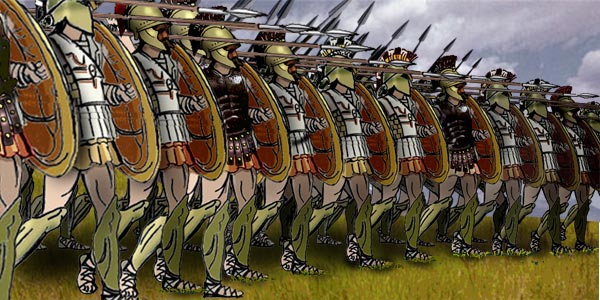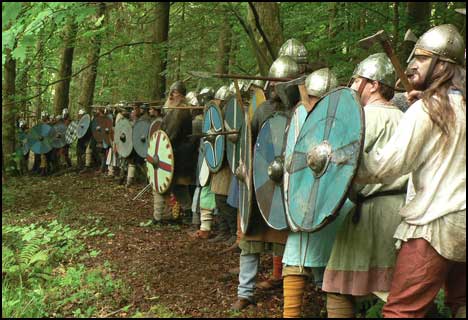Forgive me if this topic is tired, has been done over again and again or is not of interest to some. I'm referring to this apparently age-old debate about how exactly a hoplite would have, and could have fought within their phalanx, specifically of the way the spear was handled with the shield in conjunction, within the phalanx itself.
To save time and space, I'll attempt to be brief. I've always fallen on the side of over-arm spear usage when phalanxes have met each other and the shields have closed all distance. Specifically I'm curious if there's anyone out there at all who has personally wielded a hoplite spear, or a similar spear that has a rear butt-spike that acts to an extent as a counter-weight, and what their experience has told them about how the spear is best handled, especially should you be locked in shield-wall formation, and how practical over-arm usage is or is not. I've seen plenty of re-enactors go for this stance, and yet folks continue to debate it's impracticality. So, if anyone has this experience, I'd love to hear of it.
A second topic I'm curious about, is this pushing act. The Othismos, and why folks debate the push's impracticality as well. A man here has theorized that the aspis would actually give protection against suffocation. Has anyone handled an accurate replication of an aspis, and if so, I'm extremely curious what they think of this assertion.
Here are the links to that as well.
http://hollow-lakedaimon.blogspot.com/2008/10/aspis-surviving-hoplite-battle-part-1.html
http://hollow-lakedaimon.blogspot.com/2008/10/aspis-surviving-hoplite-battle-part-2.html
To save time and space, I'll attempt to be brief. I've always fallen on the side of over-arm spear usage when phalanxes have met each other and the shields have closed all distance. Specifically I'm curious if there's anyone out there at all who has personally wielded a hoplite spear, or a similar spear that has a rear butt-spike that acts to an extent as a counter-weight, and what their experience has told them about how the spear is best handled, especially should you be locked in shield-wall formation, and how practical over-arm usage is or is not. I've seen plenty of re-enactors go for this stance, and yet folks continue to debate it's impracticality. So, if anyone has this experience, I'd love to hear of it.
A second topic I'm curious about, is this pushing act. The Othismos, and why folks debate the push's impracticality as well. A man here has theorized that the aspis would actually give protection against suffocation. Has anyone handled an accurate replication of an aspis, and if so, I'm extremely curious what they think of this assertion.
Here are the links to that as well.
http://hollow-lakedaimon.blogspot.com/2008/10/aspis-surviving-hoplite-battle-part-1.html
http://hollow-lakedaimon.blogspot.com/2008/10/aspis-surviving-hoplite-battle-part-2.html


























